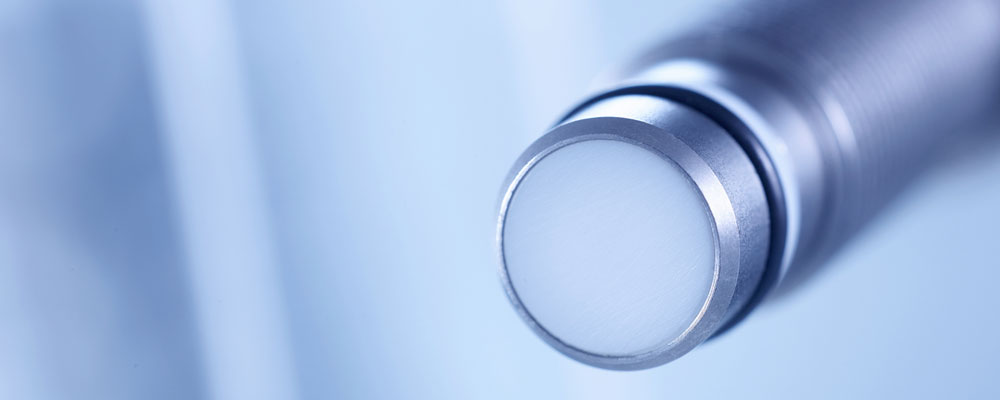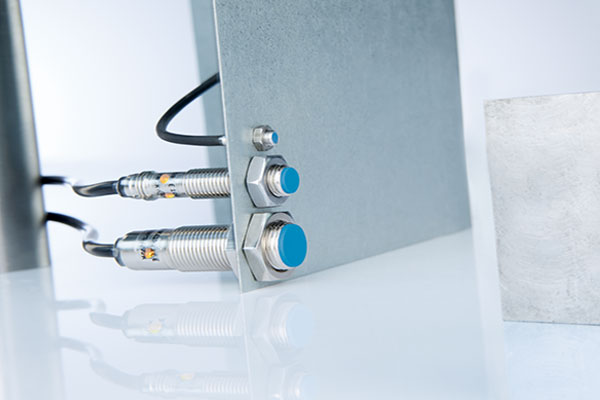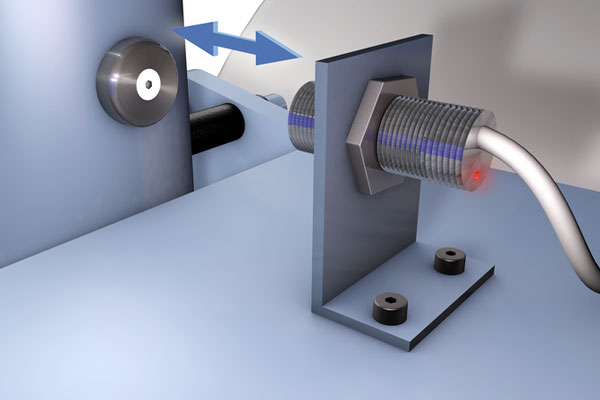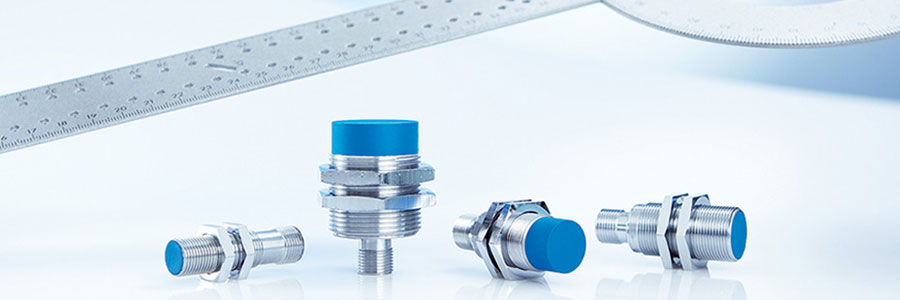Unlocking the Power of Proximity Sensors
A proximity sensor is an electronic sensor that can detect the presence or absence of an object within its sensing range without physical contact. They are widely used in various industries such as manufacturing, automotive, aerospace, and many more. Proximity sensors are essential in controlling and automating industrial processes, as they are capable of detecting the presence, absence, or distance of objects in a wide range of applications.
The sensing range of a proximity sensor depends on its type and can range from a few millimeters to several meters. Proximity sensors are commonly used in manufacturing, automotive, aerospace, and other industries to detect objects, position sensors, and measure distances.
Proximity sensors are important in various industries because they offer several advantages over traditional sensing technologies. These advantages include non-contact sensing, high accuracy, and fast response times. Proximity sensors are also reliable and can operate in harsh environments, making them ideal for use in industrial applications.

What are the different types of proximity sensors?
Proximity sensors detect objects without touch. They are used in industries like automation, robotics, automotive, and electronics. Types include those based on operation and technology.
Inductive Proximity Sensors:
Inductive proximity sensors use electromagnetic fields to detect the presence of metallic objects within their sensing range.
They consist of an oscillator, coil, and a metal target. Metal objects in the sensor’s range induce eddy currents, altering the oscillator’s output. These sensors are robust, reliable, and widely used in industrial applications.
Capacitive Proximity Sensors:
High-current proximity sensors detect objects by sensing changes in capacitance. They work for both metal and non-metal objects, making them useful in industries like food processing, plastics, and level sensing.
Magnetic Proximity Sensors:
It detects ferrous metals using magnetic fields. They are used in security systems, doors/windows, and automotive applications.
Different types of sensors have advantages, limitations, and specific applications. Consider object, range, environment, and accuracy/reliability when choosing a proximity sensor.

Best practices for proximity sensor selection
Selecting the right proximity sensor for a specific application requires careful consideration of various factors. Here are some best practices to follow when selecting proximity sensors:
Understand the Application:
Start by thoroughly understanding the requirements of your application. Consider the object’s characteristics, environmental conditions, and desired sensing range.
Consider Sensing Range and Operating Conditions: Assess sensing range and operating conditions for compatibility with the chosen sensor.
Evaluate Reliability and Durability:
Proximity sensors are often used in demanding industrial environments. Consider the reliability and durability of the sensor. Look for features such as rugged construction, ingress protection (IP) ratings, and resistance to shock, vibration, and chemical exposure.
Output Type and Interface:
Determine the required output type of the proximity sensor. Common options include NPN or PNP proximity sensor transistor outputs, analog voltage outputs, or digital communication interfaces such as IO-Link. Ensure that the chosen output type is compatible with your control system or PLC.
Consider Power Supply Requirements:
Check the power supply requirements of the proximity sensor. Make sure it is compatible with your power source and that the available power meets the sensor’s specifications. Some sensors may require specific voltage levels or current ratings.
Evaluate Installation and Mounting Options:
Consider the installation and mounting requirements of the proximity sensor. Check if it can be easily integrated into your existing setup or machinery.
Test and Validate:
The proximity sensor before implementation to ensure it meets requirements. Consider factors such as detection accuracy, response time, and false triggering. Adjust sensor settings, if applicable, to optimize performance.
Follow these best practices to select a suitable proximity sensor for reliable and accurate object detection.

What can an Inductive Proximity Sensor Detect?
Inductive proximity sensors are made to find metal objects by using electromagnetic induction. When a metal object gets close to the sensor, it creates eddy currents that change the sensor’s output.
Here are some key characteristics of what inductive proximity sensors can detect:
Ferrous and Non-Ferrous Metals:
Inductive proximity sensors detect both iron and non-iron metallic objects. This includes various types of metals such as steel, aluminum, brass, copper, and more.
Conductive Materials:
Inductive proximity sensors can detect conductive materials that can induce eddy currents. This means they can also detect materials like conductive plastics or other conductive non-metallic materials.
Detection Distance:
The detection distance or sensing range of an inductive proximity sensor depends on its design and specifications. It is typically specified by the manufacturer and can range from a few millimeters to several centimeters.
Size and Shape:
Inductive proximity sensors detect objects of various sizes and shapes with enough conductive material. However, the detection range and accuracy may vary depending on the size, shape, and orientation of the object.
Environmental Factors:
Inductive proximity sensors can operate in various environmental conditions, including temperature variations, humidity, dust, and vibration.
Inductive proximity sensors are used in many industries like manufacturing, automotive, robotics, material handling, and machine automation. They are widely used for object detection and control in various industries.


How to Select a Proximity Sensor?
Selecting the right proximity sensor for your specific application requires careful consideration of several factors. Here are some key steps to help you in selecting the appropriate proximity sensor:
Understand the Application Requirements:
Begin by thoroughly understanding the requirements of your application. Consider factors such as the object to be detected, its material, size, shape, and surface characteristics. Determine the sensing range and environmental conditions for the sensor’s operation.
Determine the Sensing Principle:
Choose the appropriate sensing principle for your specific object and environmental requirements. Evaluate which sensing principle aligns best with your application requirements.
Consider Detection Range:
Assess the required detection range for your application. Ensure that the proximity sensor can reliably detect the target object within the desired distance. Consider object size, orientation, and potential interferences that may impact detection range.
Evaluate Environmental Factors:
Check the environmental conditions for the proximity sensor. See if it needs to handle extreme temperatures, moisture, chemicals, or vibrations. Verify the sensor’s IP rating for the right protection.
Consider Cost and Availability:
Assess the cost and availability of the chosen proximity sensor. Consider factors such as initial cost, maintenance requirements, and the availability of replacement parts or sensors.
Follow these steps for selecting the right proximity sensor, ensuring reliable and accurate object detection in your application.
Trends and Future Directions in Proximity Sensing
Proximity sensing technology is rapidly evolving due to industry advancements and demand for smart systems. Here are some trends and future directions in proximity sensing:
Decrease and Integration:
Proximity sensors are becoming smaller in size while maintaining or even improving their performance. This decrease allows for more compact and integrated designs, enabling their integration into smaller devices and applications.
Improved Sensing Performance:
Sensing technology advancements are improving proximity sensors. They offer better accuracy, faster response times, longer detection ranges, and improved reliability, leading to more precise and reliable object detection.
Multi-Sensing and Fusion:
Future proximity sensors may combine multiple technologies for improved object detection by fusing sensor data.
Advanced Material Detection:
Interest is growing in proximity sensors that detect metal object presence and identify specific materials or characteristics. This can be useful in applications such as quality control, sorting, and material identification.
Smart and Connected Sensors:
Proximity sensors are integrated into smart systems, enabling real-time data sharing and IoT applications.
Power Efficiency:
Future proximity sensors aim for energy-efficient performance through low-power technologies and optimized designs.
Enhanced Environmental Robustness:
Proximity sensors endure tough environments, like extreme temperatures, humidity, vibration, and chemicals. Future sensors will be even more durable to meet industry needs.
Artificial Intelligence and Machine Learning:
AI and ML integration in proximity sensors enables advanced object recognition, pattern analysis, and prediction. This can enhance the intelligence and decision-making capabilities of proximity sensors in various applications.
Environmental Awareness:
Proximity switches now detect and react to changes in the environment, like light, temperature, and air quality. They are useful in smart homes, buildings, and environmental monitoring.
Proximity sensing continues to improve due to the demand for smarter, more efficient, and reliable solutions across various industries and applications.

Troubleshooting and Maintenance of Proximity Sensors
Troubleshooting and regular maintenance of proximity switches are essential to ensure their optimal performance and longevity. Here are troubleshooting and maintenance tips for proximity sensors:
Understand the Sensor’s Specifications:
Learn the sensor’s details like detection range, operating voltage, output type, and environmental ratings. It will assist you in troubleshooting and maintaining the sensor efficiently.
Visual Inspection:
Conduct a visual inspection of the sensor regularly. Look for any physical damage, loose connections, or signs of wear and tear. Ensure that the sensor is properly mounted and aligned with the target object.
Check Wiring and Connections:
Inspect the wiring and connections of the sensor. Ensure that the cables are securely connected and properly insulated. Check for loose or damaged wires and repair or replace them as needed.
Clean the Sensor:
Keep proximity sensors clean to maintain their performance. Use a soft cloth or recommended cleaning solution from the manufacturer. Avoid harsh chemicals that could harm the sensor.
Verify Power Supply:
Check the power supply to the sensor. Ensure that the voltage and current levels are within the sensor’s specified range. If the sensor is not functioning properly, verify the power source and connections.
Test the Output:
To test the proximity sensor, use a multimeter or suitable equipment. Make sure the sensor gives the right signal when the object is in range. If there are problems with the output, check the wiring and connections to make sure they’re set up correctly.
Adjust Sensing Range and Settings:
To fix inaccurate or inconsistent object detection, adjust the sensing range settings of the proximity sensor. Some sensors allow for range adjustments through potential dividers or programming interfaces. Make sure the sensing range is properly configured for your requirements.
Environmental Considerations:
Check the environmental conditions for the proximity sensor. Extreme temperatures, humidity, or chemicals can affect its performance. Use sensors with better environmental ratings or add protection like enclosures or shielding if needed.
Consult Manufacturers Documentation:
Consult the manufacturer’s documentation for troubleshooting and maintenance guidance. The manufacturer’s support team can also provide assistance in diagnosing and resolving issues with the sensor.
Regular Calibration and Maintenance:
Follow the manufacturer’s maintenance schedule, which may include calibration or adjustments. Stick to the guidelines to keep the sensor working well and avoid early failures.
Always prioritize safety when working principle with electrical equipment. Ensure that power is disconnected before conducting any maintenance or troubleshooting activities, and follow proper safety procedures and guidelines.
Conclusion
Proximity sensors are essential components in many industries and applications, providing a range of benefits, including increased efficiency, accuracy, and safety. Advanced insights into proximity sensors include exploring different types of sensors, understanding advanced operating principles, and highlighting advanced features, such as sensitivity adjustments, immunity to environmental factors, and integration with other technologies.
Best practices for inductive switch applications include selecting the right type of sensor, optimal placement and orientation, calibration and configuration, regular maintenance and troubleshooting, and learning from successful case studies.
Finally, emerging trends and future directions in proximity sensing include ongoing research and development, miniaturization, improved sensing ranges, and enhanced accuracy, with potential applications in fields such as robotics, IoT, automotive, and healthcare. Overall, proximity sensors are a critical technology for many industries and are expected to continue to play an increasingly important role in the future.
